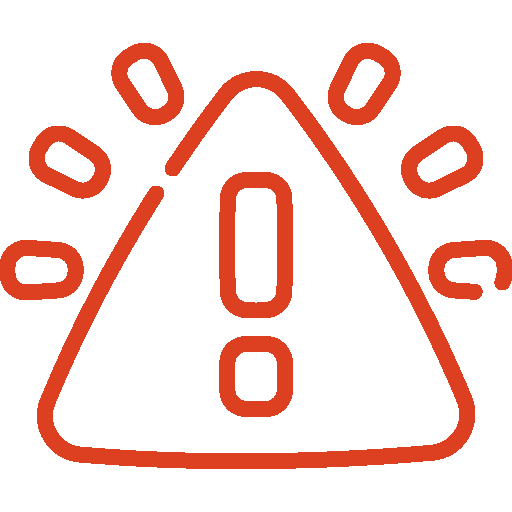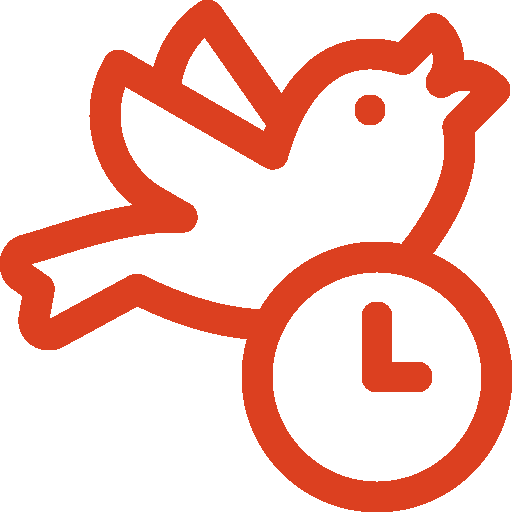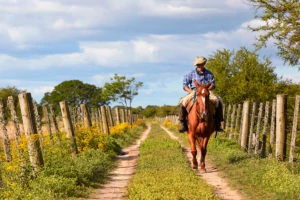

CORRIENTES ESTANCIA
Estancia in Argentina
NEXT GROUP DATE:
17 to 20 September 2026
- INFO
- ITINERARY
- PRICE / INCLUDED
- BOOKING CONDITIONS
Gaucho Culture in the Corrientes Wetlands
-
GENRE
Portrait, Gaucho's Culture
-
BEST TRAVEL PERIOD
All Year Round
-
DIFFICULTY
Easy
-
GROUP
Max 8
-
GENRE
Portrait, Gaucho's Culture
-
BEST TRAVEL PERIOD
All Year Round
-
DIFFICULTY
Easy
-
GROUP
Max 8
Enjoy a Unique Experience as you discover the work of the Gauchos, their culture, and their traditions in a stunning setting, completely immersed in nature. Guided by our Lead Photographer, we will explore a working estancia, its surroundings, and the Estero Pucú, offering endless opportunities to capture nature and landscapes.
One of the highlights of the workshop will be witnessing the herding across the wetlands—photographing the gauchos in full action and capturing the deep connection between horse and rider.
If conditions allow, we may also encounter a variety of wildlife, including caimans, capybaras, kingfishers, and more. Majestic century-old trees will provide perfect elements for creative compositions. And of course, no visit would be complete without the local flavors—we will enjoy excellent traditional dishes in a charming atmosphere that feels like stepping back in time.

To book flights, please contact us before, we will help you coordinate schedules and transportation to get there. The nearest city is Santa Fe.

Transportation to the Estancia is not included in the trip, and we will not be responsible for any delays or disruptions that are beyond our control. In any case, we will do what we can, given the circumstances, to help you.
We will depart from Buenos Aires early in the morning, arriving at the Estancia in time for lunch. Upon arrival, the Lead Photographer will present an overview of the workshop activities.
Our host, Miguel, will then introduce us to the Estancia and lead a walk around the main house and its surroundings. In the afternoon, we will document gaucho activities in the field, followed by portrait sessions at sunset. There will also be many opportunities to photograph local wildlife throughout the day.
Dinner and overnight stay at the Estancia.
At dawn, we will immerse ourselves in the awakening of nature, capturing images of the estancia’s animals bathed in the first light of day. Breakfast will follow.
In the morning, we will explore the estancia’s lands in search of wildlife inhabiting the nearby lagoons, such as caimans, and enjoy a photo session with the traditional carriage. Lunch.
The afternoon will be dedicated to documenting the gauchos at work—portraying them and photographing the herding in the wetlands. As the sun sets, we will focus on landscape photography, using the gaucho as our central figure and incorporating the estancia’s centuries-old trees into our compositions. Snack.
Dinner and overnight stay at the Estancia.
After breakfast, we will dedicate the entire day to nature photography, exploring the nearby Estero Pucú lagoon by boat in search of caimans and other wildlife native to the Corrientes province. This will be a rare opportunity to experience and photograph the traditional navegación a botador.
Lunch will be served in the field.
Throughout the day, we will also have opportunities to portray the gauchos who accompany us on this expedition, capturing them in the heart of nature. In the late afternoon, we will return to the Estancia with time to review and discuss the day’s work. Snack and dinner will follow.
After dinner, those interested can take part in a night photography session before overnighting at the Estancia.
After breakfast, we will say goodbye until the next adventure!
IMPORTANT
The itinerary published on this page and on our PDFs/brochures is indicative. The guide reserves the right to make changes without prior notice, which may depend on various factors/events such as weather, geography, protests, medical emergencies, etc.
Changes are aimed at ensuring the safety of travelers and the success of the trip, always trying to maintain the proposed activities.
The estancia is located in an area far from Buenos Aires (approximately 800km in direction north), natural and poorly connected to public transportation services. This makes the place even more unique, however, not easy to reach.
Price x person (based on 6 participants):
850 USD (Double Occupancy)
Single Supplement available for 250 USD extra.
What's included?
- Professional Photographer
- Local Guide at the Estancia
- Small Group Size
- Analysis of the Work Done
- Accommodation for 3 Nights
- All Excursions and Photography Activities
- All Meals, Water, Coffee, Tea
What's not!
- Transport from your origin point to the Estancia
- Travel & Medical Insurance
- Personal Expenses
- Tips
Bookings
To book a workshop we ask for 30% deposit of the total.
The workshop balance must be paid 45 days before the start date. You can also pay in cash (USD or euros) upon arrival.
Cancellations & Refunds
For a workshop cancellation, a written notice is required. Please email your request to info@argentinaphotoworkshops.com.
We acknowledge the commitment involved in attending our workshops and strive to accommodate unforeseen circumstances.
Please review our Cancellation Policy below:
• Cancellation made more than 181 days before the workshop start date: 20% refund of any payments made.
• Cancellation made less than 180 days before the workshop start date: No refund of any payments made.
Please note the following:
• In the event that you are unable to attend, your paid balance will be credited for 1 year (from the date of the cancelled trip) as part of the payment of a workshop of your choice.
If the amount was paid in Argentine pesos, the equivalent in US dollars will be credited subject to the exchange rate on the day the trip was cancelled.
In case the workshop is cancelled by Argentina Photo Workshops due to reasons of force majeure:
• There will be a complete refund of the amount deposited.

5% EARLY BIRD DISCOUNT
Applies for bookings made more than 8 months in advance of the start date.
RECOMMENDED EQUIPMENT
Check out our guide on “How to Prepare for a Photography Workshop”, as well as information on equipment and FAQs below.
Near the date of the workshop, we will be in touch through a WhatsApp group, an ideal space to answer all kinds of questions before the trip and organize every detail. If necessary (upon request) we will also arrange a group video call via Google Meet for this purpose.
Although you can participate with any type of photographic device, we recommend a reflex or mirrorless camera, which allow much more freedom and creativity.
Considering the wide variety of photographic situations this workshop presents, it is advisable to have available focal lengths ranging from wide-angle (shorter distances) to telephoto (longer distances).
For Landscape Photography, we suggest a wide focal lenght: ideally around 15 – 50 mm. You can also get a good landscape with a longer focal length by using a stable tripod.
For night photos (Astrophotography) the shorter the focal length, the better. This makes it possible to include more elements in the frame.
For terrestrial wildlife, a 300mm or longer telephoto lens is the best choice.
Consider also buying a tele converter to increase the focal length of the lens: 1.4x or 2x. Even if with loss of luminosity.
Finally, choosing the right set of lenses is not easy. If you encounter difficulties and need some suggestions do not hesitate to contact us.
Many of the areas we visit are remote, and it is possible to fly the drone, always maintaining proper precautions and at a distance from agglomerations of people, airports, and helicopter landing strips.
The most important feature of a tripod is its stability. Since every journey includes some trekking, we must also take into account the weight.
We suggest a good carbon tripod that maintains a good balance between weight and stability, that can easily change from one height to another and that locks in little space.
Aluminum is also fine, as carbon is generally much more expensive. We know that choosing a tripod is not easy and we are available to help you choose the right model for you.
A Polarizing filter will be very useful to neutralize water reflections in the lagoons.
For those who love Landscape Photography, ND filters with 6 or 8 steps will be also very useful to play with the movement of water and clouds.
It is recommended to carry UV or Skylight filters, useful to protect the lenses from Ultraviolet rays (even more important in these altitudes), dust and splashes.
Finding the right photo backpack can be a difficult challenge. We recommend you to rely on a brand with quality and experience in the market.
The type of backpack clearly depends on your equipment. But what really matters is that you feel comfortable with it and possibly fitted with a rain cover.
You can’t miss in your backpack: a cleaning kit for the lenses, a remote control to shoot without touching the camera, hood for the lenses (to avoid flare) and a robust / comfortable camera strap.
It is also important to take spare batteries and memory cards with you.
FREQUENTLY ASKED QUESTIONS
Of course, accompanying non-photographers are welcome. The price is the same.
Usually in a Photo Tour the Leading Photographers accompany to locations only, while in a Workshop you are also expected to receive technical notions to improve your photography. Both options, often confusing, are good. It depends on what one is looking for. Our activities are developed in both modes, depending on the trip.
Argentine Mesopotamia is one of the richest areas of fauna in the world, a paradise for enthusiasts.
We will have the chance to meet Caimans, Capybaras (Hydrochoerus hydrochaeris), Kingfishers, Hummingbirds, Monk Parakeet (Myiopsitta monachus), Spoonbills, Vultures, Egrets, Herons, Cormorants, Ducks, Cardinals, among many others.
We recommend taking a pair of waterproof boots, rain protection, a hat, sunscreen, and mosquito spray with you.
Most of the planned excursions around the estancia cask are of low fitness difficulty.
The round trip between your city of origin to the estancia is not included in the price.
However, we can coordinate it.
These activities require a lot of organization and are prepared well in advance. Weather is a factor we can’t predict, so the workshop/photo tour is not cancelled.
In any case, we will always be attentive to weather conditions to optimize the program and try to provide the best light conditions for photography.
Get more information about the Photo Tour, such as the cost of the next group workshop or a quote for a private adventure, just for you / your group.
ESTANCIA IN ARGENTINA - GET MORE INFO
Join this Adventure!
RELATED ARTICLES
Gauchos: the free souls of the Argentine countryside
The purpose of Argentina Photo Workshops is to offer unique...
Read More
